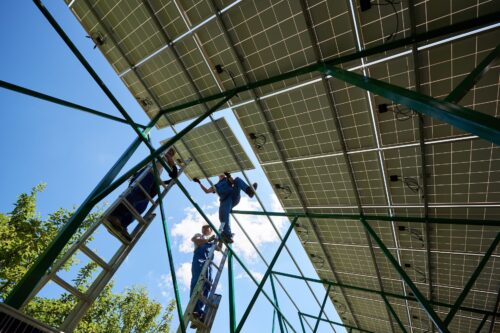
What is RECOST?
RECOST is E3’s discounted cash flow model used to calculate the levelized costs of different candidate resources, from the present through 2050. Since 2010, E3 has regularly created and released formal public databases and calculations of levelized costs for its clients. In the Western U.S., E3 analysis of resource costs has supported public planning processes of the WECC Transmission Expansion Planning and Policy Committee and the California Public Utilities Commission, for example. Learn more about the tool >
What’s New?
After the November 2024 election and January 2025 inauguration, multiple policy changes and announcements have overlapped with continuing macroeconomic developments to impact resource costs in material ways. Most important, E3 perceives a significant lag in the representation of increasing costs of developing new gas plants in existing public analysis, which will shape the debate over what a “least-cost” resource looks like in the coming years. Furthermore, policy announcements and indications suggest that tariffs are likely to impact new resource costs for the near-to-medium term, while our previous expectations for long-run application of Inflation Reduction Act tax incentives for new zero-emissions resources appear less likely in an environment of potential rollbacks or repeal. To reflect and address these issues, E3 has updated our resource cost forecasts and finds that:
- Costs for building new gas plants have increased by 30% relative to Q4 2024 in our “Mid” (baseline) forecasts from mostly stable averages from the 2010s, in line with recent macro cost trends. New Combined Cycle overnight capital costs are now $1700 per kW in our Mid case, up from $1300 per kW in Q4 2024, and High case assumes $1900 per kW. These increases are not just due to inflation: supply chain and labor constraints mean that critical equipment is now more difficult to obtain and deploy, which is flowing from OEMs to purchasers and beginning to become more widely known.
- Solar tariffs appear likely to remain a critical component of this resource’s cost profile, and E3 expects new solar resources to reflect an increase of 8% in expected costs in the near-term, at a minimum. E3 updates our forecasts to reflect a conservative estimate: the broad application of recent anti-dumping / counter-vailing duty penalties across the sector, instead of only to select import sources.
- The acceleration of the phase-out or cessation of the Inflation Reduction Act’s tax incentive components now appears to be a real possibility. E3 updates our prior assumption that the phase-out of these incentives will be triggered in 2045 to 2032, the earliest possible year under current legislation. This results in an increase in the levelized cost of energy from new wind and solar resources of up to $46/MWh in the 2030s (lower for wind).
RECOST’s Q1 2025 Forecast >

What’s Next
E3 has updated RECOST using the latest market data and internal expertise. The RECOST model is completely customizable to client views on financing, timeline, capital costs, and operating costs for the creation of custom views relative to E3 perspectives. RECOST is available for purchase along with our latest market views here. For more information, reach out to E3 at marketprices@ethree.com.


